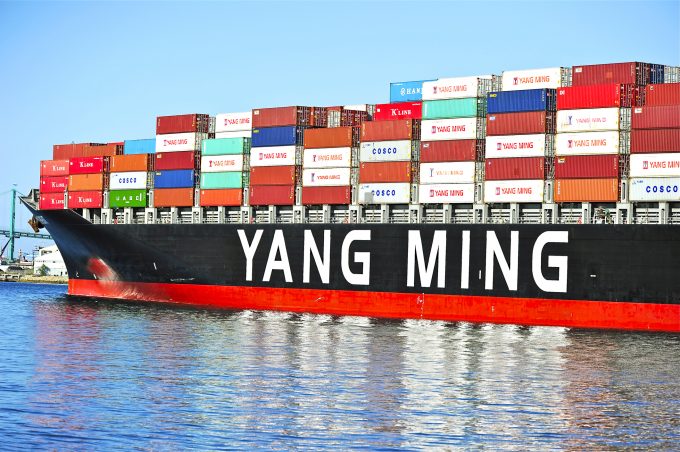Cargo vessels sink as Typhoon Gaemi sweeps across Taiwan
General cargo vessel Fu Shun has sunk as Tyhpoon Gaemi causes devastation across Taiwan, with many ...
TFII: SOLID AS USUALMAERSK: WEAKENINGF: FALLING OFF A CLIFFAAPL: 'BOTTLENECK IN MAINLAND CHINA'AAPL: CHINA TRENDSDHL: GROWTH CAPEXR: ANOTHER SOLID DELIVERYMFT: HERE COMES THE FALLDSV: LOOK AT SCHENKER PERFORMANCEUPS: A WAVE OF DOWNGRADES DSV: BARGAIN BINKNX: EARNINGS OUTODFL: RISING AND FALLING AND THEN RISING
TFII: SOLID AS USUALMAERSK: WEAKENINGF: FALLING OFF A CLIFFAAPL: 'BOTTLENECK IN MAINLAND CHINA'AAPL: CHINA TRENDSDHL: GROWTH CAPEXR: ANOTHER SOLID DELIVERYMFT: HERE COMES THE FALLDSV: LOOK AT SCHENKER PERFORMANCEUPS: A WAVE OF DOWNGRADES DSV: BARGAIN BINKNX: EARNINGS OUTODFL: RISING AND FALLING AND THEN RISING

Taiwanese ocean carrier Yang Ming has become the latest container line to report a heavy loss in the second quarter of the year, posting a net deficit of $129m.
It means that all three members of THE Alliance vessel-sharing agreement have now posted negative results for the period.
Yang Ming attributed its loss in Q2 to “unexpected higher fuel prices” and an “oversupply of tonnage”.
It said its average fuel price had jumped by 25%, compared with the same quarter the year before, and that the container shipping industry faced “arduous and continued challenges this year”.
The carrier boosted its liftings in the quarter by 11.8% year on year, to 1.29m teu, but this was achieved at the expense of rate levels, as its revenue improved by only 1.1% to $1.14bn.
Yang Ming’s accumulated loss for the half year reached $195m from 2.52m teu carried and a total revenue of $2.2bn.
In May it dismissed a Q1 $66m loss as a “typical first-quarter slack season”, after having scraped an $11m profit for Q1 17, but this deteriorating result will worry shippers who have long been concerned about the carrier’s future.
The Loadstar is aware of a number of shippers that have decided not to ship with Yang Ming while its losses continue.
Moreover, the carrier has been forced to issue several reassurances regarding its financial stability, and has had to tap “government-related investors” – who now control 45% of the company – for cash.
Yang Ming said its average freight rates in the first six months “were about 10% lower”, which, combined with the hike in bunker costs, assured the carrier of a ‘red ink’ result.
The carrier did not publish its average rate per teu, but its comment suggests that it was below those of its peers.
On the outlook it warned: “Circumstances surrounding the global trade economy also present challenges and difficulties for the shipping industry.”
It said it expected its second-half results to improve, based on a strong peak season and less new tonnage being delivered, but it is difficult to see how Yang Ming can avoid suffering a significant end-of-year loss.
And Yang Ming said it was optimistic for 2019, given the predicted growth demand of 4.2%, compared with supply, which is expected to increase by 3.7%.
It is also taking steps to reduce its costs by redelivering seven “high-cost chartered vessels” in the fourth quarter, and recently announced that it entered into charter party agreements to lease five 11,000 teu and five 12,000 teu fuel-efficient newbuilds for delivery in 2020-21.
The members of THE Alliance racked up a cumulative $329m in losses in the second quarter. Lead line Hapag-Lloyd announced an $80m trading deficit on Friday, while the newly-merged Japanese carrier Ocean Network Express (ONE) reported a loss of $120m in its first quarter of trading.
Comment on this article